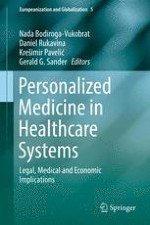2019 | OriginalPaper | Buchkapitel
Personalised Medicine in Health Care Systems and EU Law: The Role of Solidarity?
verfasst von : Adrijana Martinović
Erschienen in: Personalized Medicine in Healthcare Systems
Verlag: Springer International Publishing
Aktivieren Sie unsere intelligente Suche, um passende Fachinhalte oder Patente zu finden.
Wählen Sie Textabschnitte aus um mit Künstlicher Intelligenz passenden Patente zu finden. powered by
Markieren Sie Textabschnitte, um KI-gestützt weitere passende Inhalte zu finden. powered by
